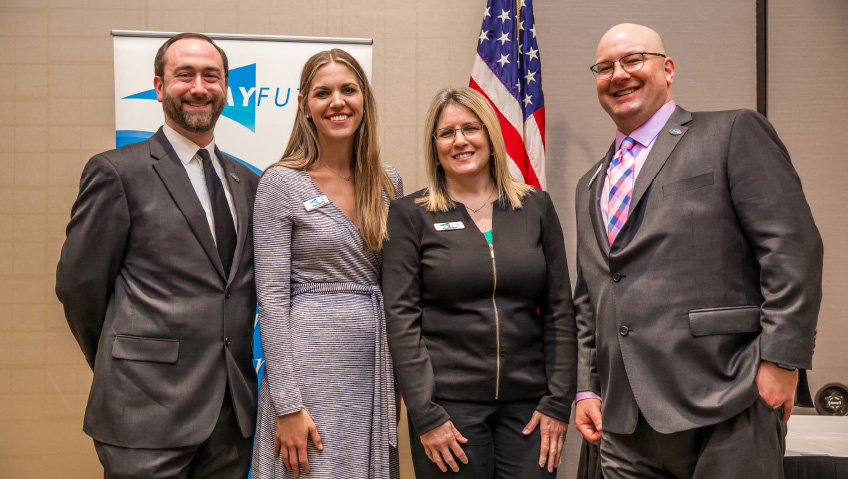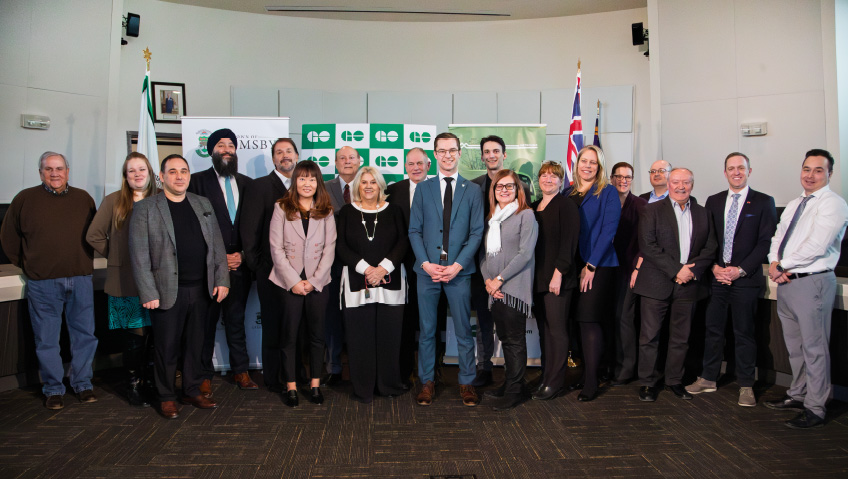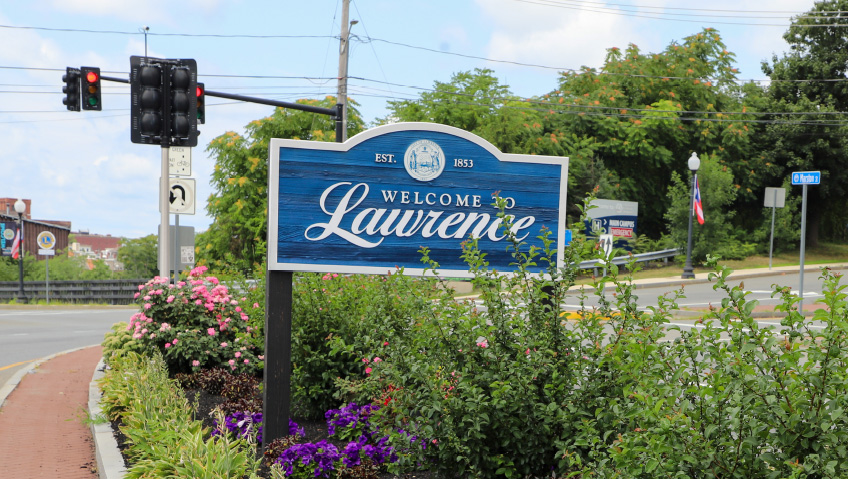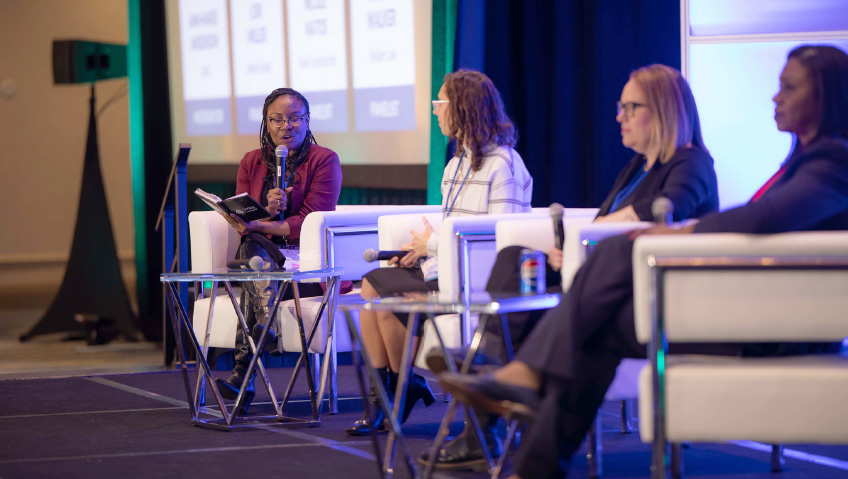“Our community is really embracing what the future could be.” – Trevor Keyes
In 2019, leaders in the mid-Michigan community of Bay City decided to put forward an aggressive economic development plan that set measurable goals for success and would set the path for future prosperity and growth in this re-emerging Midwestern town. They had been thoughtful in their methodology of getting community feedback to craft the goals and had agreed on the tactics they would implement to meet and exceed the goals. Following on from recent successes, they had taken a tried-and-true path of identifying the strengths and opportunities of the community and were finally ready to put their plan in to action and drive forward.
Then COVID happened.
For Bay Future, Inc., the economic development engine dedicated to driving business retention, attraction, and expansion efforts, job creation, and entrepreneurial support in Bay County, Michigan, they knew execution is where they excel. So, they got to work. The result? The metrics speak for themselves.
Since its final adoption in early-2020, Bay Future has been tirelessly executing its strategic action plan, ‘Bay Future: Drive. Forward.’ In doing so, the organization has raised the benchmark in terms of what is possible when it comes to growth and investment in the community.
Megan Manning, Investor Relations and Marketing Manager for Bay Future, provides some insight into the organization’s exceptional performance: “In terms of goal completion, when it comes to numbers, we set a goal of $500 million in new economic development project investment and have surpassed that to secure nearly a billion dollars of capital investment in our community. By the time this article is published we will have met or exceeded our 800 job goal as well, with nearly a year and half left to complete our strategic plan,” she shares.
Excelling in unprecedented times
Despite facing an unprecedented pandemic during this time, Bay Future has managed to secure more economic development project investment over a matter of five years than it had in its previous 10 years. It has also worked with companies to secure more capital impact in the community than at any other time in the community’s modern history. As one can imagine, this has had substantial impacts on the growth and vitality of the area.
For President and CEO Trevor Keyes, “Our organization will celebrate 20 years of securing economic impact and new jobs for all of Bay County, next year. I’ve been with the organization for more than half of those 20; we are a totally different community, and our organization has evolved immensely since my first day, and that’s an amazing testament to our team here, our Board of Directors, our investors, and our partners in really embracing what the future could be.”
The reason for Bay Future’s success is simple: hard work, partnership, resiliency, and the willingness to adapt. The organization wasted no time when the pandemic hit, quickly pivoting to ensure the business community had the resources and the support necessary to withstand the economic impacts of these uncharted waters. Instead of setting aside its goals, Bay Future found a way to actualize its goals while simultaneously addressing the challenges COVID brought. This was done in tandem with county, state, and federal government partners and by leveraging funding made available through private foundations and the American Rescue Plan Act.
Keyes notes that, “We were called to act and called to serve in a very different way than we ever had been before. We looked at issues holistically and we prioritized things in tandem by identifying what we were going to be able to accomplish while we were also pivoting and helping where we needed to.”
He continues, “That plan was a solid foundation on which we were able to build what was to come and has turned into initiatives that were able to be supported through the American Rescue Plan Act that made weathering the storm much more tolerable.”
A plan in action
Funding through the American Rescue Plan Act, approved by municipal support, played a major role in supporting local businesses that had been adversely impacted by COVID in three different ways, in accordance with three different timelines: immediate, intermediate, and long-term.
In the immediate-term, the focus shifted to small business support, as this segment of the economy was at the greatest risk of incurring losses associated with the closure of non-essential businesses to curb the spread of COVID. Bay Future secured and operated financial support programs that produced more than $4 million in additional resources that were dedicated to small businesses during that time to help them navigate the changing landscape.
Through the Small Business Grant Program, one of over 15 new programs created to spur economic development in Bay County, “we were able to support 141 small businesses by reimbursing them for their rent, mortgage, or utilities, during a defined period of time that helped them to continue to operate in a way that was going to lead to success for them,” Keyes explains.
Secondly, in the intermediate-term, to support local businesses and entrepreneurs, Bay Future worked with the Small Business Development Center and created a Small Business Consultant Program in partnership with Saginaw Valley State University.
“We were able to hire a consultant whose office is here at Bay Future, and make that person the subject matter expert available to small businesses. She can set up meetings to discuss their most pressing issues or discuss what they want their future to be; she can then work with them to identify and ultimately provide tools to assist them in being successful,” explains Keyes of the effort.
“Helping with succession planning,” he says, “is going to be just as helpful as working with a company to help them grow. Sometimes success is with succession, so having that small business subject matter expert working with the small business owner to focus on the future is invaluable.”
By being good stewards of the investment funds bestowed upon them, Bay Future can move economic development efforts forward while exponentially increasing the positive impact felt by the community. This makes it a place, as Keyes says, “where people want to live, work, worship, and play.”
Business growth
To further facilitate talent attraction and retention over the long-term, Bay Future has partnered with the Bay Area Chamber of Commerce on the “Hey! Bay City” initiative, as well as with Michigan Works, the local workforce agency, to bring together job seekers and employers who would like to call the area home. This is an especially important focus given the rate of industrial growth and investment taking place in Bay County. While economic uncertainty was characteristic of the pandemic, Bay County managed to secure some of the most impactful projects measured by capital investment and job creation totals in the community’s history.
SK Siltron CSS, a silicon carbide wafer manufacturer that supports the semiconductor industry, doubled its Bay County workforce to 240 employees, and counting, thanks to a $300+ million investment in its manufacturing capacity. Word of the investment in this critically important industry sector made its way to the White House and garnered a visit by President Joe Biden late last year. The anticipation continues to build as the company plans to increase production capacity sixteen-fold by 2025, meaning more money and more jobs ahead for Bay County, the state, and the nation.
Similarly, Hemlock Semiconductor, in a neighboring community, broke ground on a $375 million expansion late last year that will bring 170 more jobs to the state, while Mersen USA, an advanced materials and manufacturing operation, is investing more than $70 million and adding more than 70 jobs in Bay City, further signaling the strength of the semiconductor industry in Bay County.
Another major investment in the area is being made by Michigan Sugar Company, which has operated in the area processing sugar beets since 1906 and is one of the country’s largest sugar processors. The company is investing over $70 million to build a new desugarization facility with the capacity to extract more sugar from molasses and more efficiently use their resources.
These investments prove that Bay County is at an interesting economic crossroads with its legacy industries and the industries of the future: from agriculture and automotive to the shift to electric and autonomous vehicles, advanced materials, and manufacturing, there is significant economic potential in these historic sectors thanks to technology and innovation.
“Knowing that Michigan is the state that put the world on wheels and that the next maturation of the automobile industry would be centered around the mobility, autonomous, and electric vehicle sectors, including opportunities in the semiconductor supply chain… for us it was a question of, ‘how can we position ourselves and our community, much like the forefathers of our community before us had, with the automotive industry as the industry is growing? That was the blueprint,” Keyes suggests.
“We’re bringing in technologically advanced companies and supporting those companies that want to grow. We are supporting the needs of our heritage industries like agriculture and agricultural processing. We are working collaboratively to help bridge the gap between the needs of business today and gearing up the workforce of tomorrow with the skills they need to be competitive in the economic landscape. There is a lot more to do, but we have worked closely with those companies to assist them in positioning themselves to take advantage of some of those opportunities and changes in culture, changes in industries and changes in our world,” he adds.
Room to grow
To ensure that Bay County is as business-friendly as can be and continues to grow with the needs of its current and future companies, additional efforts have been expended to ensure that development-ready sites are available to accommodate the growth that is taking place. Via its “Build Ready Bay County” property site readiness program, the area will ensure that vetted sites of different sizes are available for immediate development.
Bay Future is working closely with its municipal and private sector partners to bring this site readiness program to fruition, and by the end of 2024, Keyes hopes to have a portfolio of shovel-ready sites ready for site selectors to peruse.
“It continues to be a very real need and if you don’t have sites that are ready, that means those companies are losing time to market. If you’re losing time to market, you’re losing competitiveness. So if we can produce sites that are ready for development that have a shorter lead time, then our propensity to secure these companies and additional investment in to our community is going to be high,” he explains.
With programs like the Bay County Small Business Grant Program, Small Business Consultant Program, Hey! Bay City, and Build Ready Bay County, in addition to executing on its strategic action plan, it would be easy to sit back and celebrate these various wins as a team, but the truth is, Bay Future has only just begun.
From Keyes’ perspective, “We’ll continue to aim high. We’ve been very fortunate that our Board of Directors, our partners, and our investors agree with that kind of mentality. With the team we’ve put together here, we’ve been able to hit those goals and continue to reach higher. We’re building a community for the future.”






